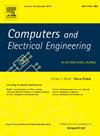A systematic review of QoS enhancement techniques in microservices architecture
IF 4
3区 计算机科学
Q1 COMPUTER SCIENCE, HARDWARE & ARCHITECTURE
引用次数: 0
Abstract
Microservices architecture (MSA) has emerged as a dominant paradigm for developing scalable, flexible, and independently deployable applications. This approach improves the maintainability and scalability of applications by decomposing them into smaller and self-contained services. However, ensuring high Quality of Service (QoS) in dynamic environments remains a persistent challenge due to the distributed nature, complexity, and continuously changing user requirements. The main goal of this study is to thoroughly examine the key quality attributes that greatly affect the QoS of microservices applications, including performance, reliability, maintainability, and fault tolerance. It also provides deep insights into how machine learning (ML) can be used to improve these quality attributes. Additionally, this survey identifies major challenges and limitations in enhancing the QoS of microservices and explores potential future research directions. It emphasizes the need to focus on quality attributes like security, testability, fault prediction, and reliability. The study also suggests investigating alternative deployment environments, such as edge and fog computing, to address related challenges. These advancements will contribute to more robust, reliable, and user-friendly microservices applications, ultimately better meeting the evolving demands of users and businesses.
微服务架构中QoS增强技术的系统综述
微服务架构(MSA)已经成为开发可伸缩、灵活且可独立部署的应用程序的主要范例。这种方法通过将应用程序分解为更小且自包含的服务,提高了应用程序的可维护性和可伸缩性。然而,由于分布式、复杂性和不断变化的用户需求,确保动态环境中的高服务质量(QoS)仍然是一个持久的挑战。本研究的主要目标是彻底检查影响微服务应用QoS的关键质量属性,包括性能、可靠性、可维护性和容错性。它还提供了如何使用机器学习(ML)来改进这些质量属性的深刻见解。此外,本调查还指出了增强微服务QoS的主要挑战和限制,并探讨了潜在的未来研究方向。它强调需要关注质量属性,如安全性、可测试性、故障预测和可靠性。该研究还建议调查替代部署环境,如边缘计算和雾计算,以解决相关挑战。这些进步将有助于实现更健壮、可靠和用户友好的微服务应用程序,最终更好地满足用户和企业不断变化的需求。
本文章由计算机程序翻译,如有差异,请以英文原文为准。
求助全文
约1分钟内获得全文
求助全文
来源期刊

Computers & Electrical Engineering
工程技术-工程:电子与电气
CiteScore
9.20
自引率
7.00%
发文量
661
审稿时长
47 days
期刊介绍:
The impact of computers has nowhere been more revolutionary than in electrical engineering. The design, analysis, and operation of electrical and electronic systems are now dominated by computers, a transformation that has been motivated by the natural ease of interface between computers and electrical systems, and the promise of spectacular improvements in speed and efficiency.
Published since 1973, Computers & Electrical Engineering provides rapid publication of topical research into the integration of computer technology and computational techniques with electrical and electronic systems. The journal publishes papers featuring novel implementations of computers and computational techniques in areas like signal and image processing, high-performance computing, parallel processing, and communications. Special attention will be paid to papers describing innovative architectures, algorithms, and software tools.
 求助内容:
求助内容: 应助结果提醒方式:
应助结果提醒方式:


